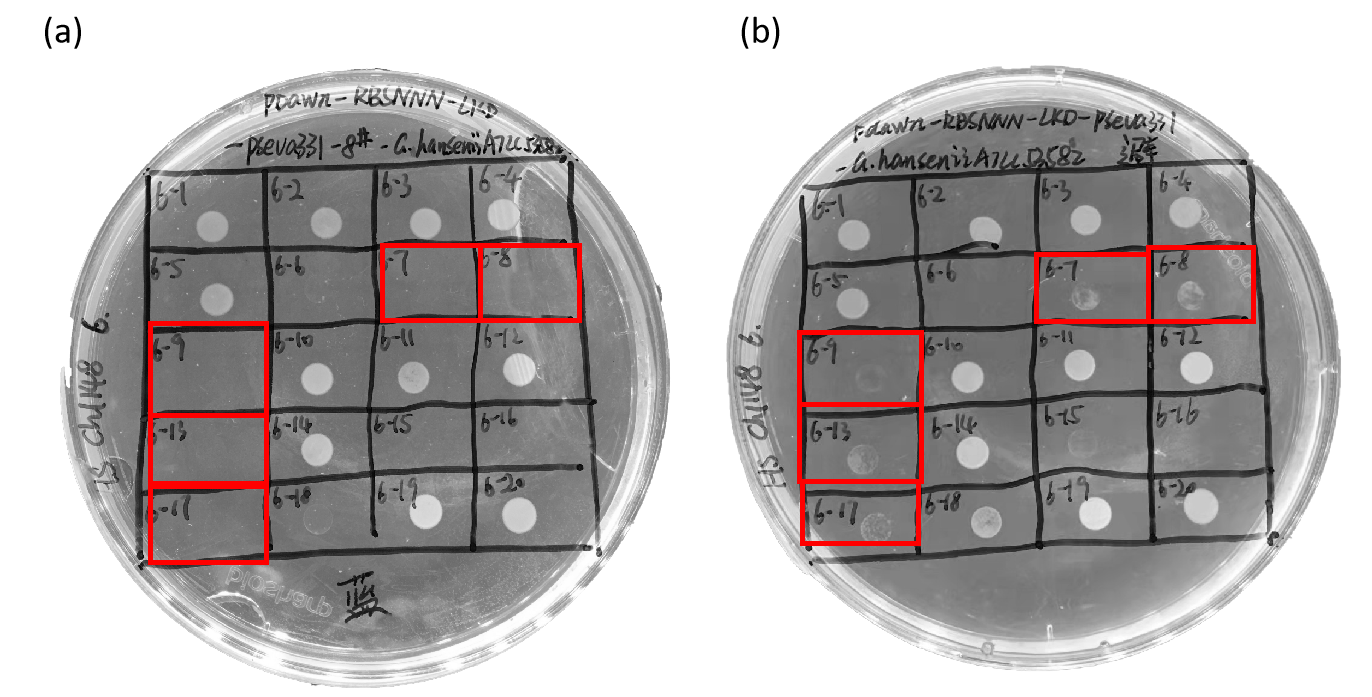Part:BBa_K3740032
Lysis Cassette LKD16
Description
The lysis cassette LKD16 is made of gp44 holin, gp45 endolysin, gp46 Rz-like protein and gp46.1 Rz1-like protein.
Sequence and Features
- 10COMPATIBLE WITH RFC[10]
- 12COMPATIBLE WITH RFC[12]
- 21COMPATIBLE WITH RFC[21]
- 23COMPATIBLE WITH RFC[23]
- 25INCOMPATIBLE WITH RFC[25]Illegal NgoMIV site found at 252
Illegal NgoMIV site found at 303 - 1000COMPATIBLE WITH RFC[1000]
2021 SZPT-China
Biology
Lysis Cassette LKD16 is originated from the genome of Pseudomonas aeruginosa bacteriophage LKD16, bacteriophage LKD16 was isolated from environmental water samples in Belgium. The lysis cassette LKD16 is made of gp44 holin (BBa_K3740013), gp45 endolysin (BBa_K3740014), gp46 Rz-like protein (BBa_K3740015) and gp46.1 Rz1-like protein (BBa_K3740016).
Usage
The target gene of pDawn blue light response system (BBa_K1075044) and Lysis Cassette LKD16 (BBa_K3740032) were insert into the pSEVA331 expression vector. Then, random primer guided mutagenesis method to modulate the strength of the RBS (BBa_B0034) located upstream of LKD16. After introducing into E. coli DH5α, E. coli isolates that normally grow in the dark and cannot under the light of 470nm blue light were screened. Finally, the pDawn-RBSNNN-LKD16-rrnB T1 plasmid was extracted, and further introduced into G. hansenii ATCC 53582, in which the responsiveness of pDawn to blue light was also verified.
Characterization
1.Batch screening of pDawn-RBSNNN-LKD16-rrnB T1-pSEVA331 in response to blue light lysis in E. coli.
As shown in Figure 2, the 4th, 9th, 10th and 12th of the plate can grow normally in the dark, but not grow under blue light, indicating that LKD16 can induce lysis in E. coli in response to blue light.
2. pDawn-RBSNNN-LKD16-rrnB T1-pSEVA331-8# in response to blue photolysis in G. hansenii ATCC 53582
As shown in Figure 3, although 7th, 8th, 9th, 13th and 17th on the plate can grow under the dark, not grow under blue light, the growth of the bacteria under dark conditions is abnormal. Therefore, although the LKD16 cleavage protein has a cleavage function, its function is not very stable.
References
[1] Ceyssens P J, Lavigne R, Mattheus W, et al. Genomic Analysis of Pseudomonas aeruginosa Phages LKD16 and LKA1: Establishment of the KMV Subgroup within the T7 Supergroup[J]. Journal of Bacteriology, 2006.
| None |



